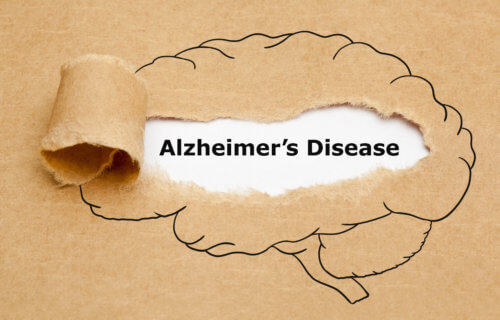BOSTON, Mass. — In a first-of-its-kind study, researchers have discovered over a dozen gene variants which reveal the genetic links to the condition’s most infamous symptom — brain dysfunction. A team from Massachusetts General Hospital (MGH), the Harvard T. H. Chan School of Public Health, and Beth Israel Deaconess Medical Center say their report may lead to new therapies for patients dealing with dementia.
Using whole genome sequencing (WGS) for the first time, study authors analyzed the genomes of over 2,200 individuals. These people came from 605 families who have multiple relatives dealing with Alzheimer’s, the most common form of dementia. The team also studied the genes of 1,669 people unrelated to the other volunteers.
The results identified 13 previously unknown gene mutations with a connection to the disease. Importantly, these variants have a link to the functioning of the synapses, the channels transmitting information between brain neurons. Scientists add the genes also have a connection to neuroplasticity, the ability of neurons to reorganize the brain’s neural network.
The missing link in Alzheimer’s research?
MGH researchers have been studying the genetic origins of Alzheimer’s disease (AD) for the last four decades. In that time, Dr. Rudolph Tanzi and this colleagues discovered genes which cause early onset familial Alzheimer’s. This form of the disease typically runs in family lines and strikes before age 60. These genes — like the amyloid protein (A4) precursor (APP), and the presenilin genes (PSEN1 and PSEN2) — all lead to the buildup of amyloid plaques in the brain, a main symptom of Alzheimer’s.
Study authors note that the next 30 AD gene mutations uncovered mainly had a link to chronic brain inflammation. However, these genes merely increase the risk for developing the disease, not cause it. Until now, the genetic link to loss of synapse function has been unclear.
“It was always kind of surprising that whole-genome screens had not identified Alzheimer’s genes that are directly involved with synapses and neuroplasticity,” says Tanzi in a media release.
Whole genome sequencing: the new tool in fighting dementia
Until the new study, scientists used genome-wide association studies to identify AD gene mutations. These tests scan the genomes of many people, trying to find common gene variants patients with certain diseases carry. Unfortunately, common Alzheimer’s variants account for less than half of AD’s heritability. By switching to whole genome sequencing, scientists scan every last bit of DNA in a patient’s genome.
“This paper brings us to the next stage of disease-gene discovery by allowing us to look at the entire sequence of the human genome and assess the rare genomic variants, which we couldn’t do before,” explains Dmitry Prokopenko, PhD, of MGH’s McCance Center for Brain Health.
“Rare gene variants are the dark matter of the human genome,” Tanzi adds.
Researchers say there are around three billion pairs of nucleotide bases which form a complete set of DNA. Every person has 50 to 60 million gene variants in them, with over three-quarters being rare ones.
“With this study, we believe we have created a new template for going beyond standard GWAS and association of disease with common genome variants, in which you miss much of the genetic landscape of the disease,” Tanzi concludes.
The team is now planning to use “Alzheimer’s in a dish” — a 3D-model of cell culture and brain organoids — to uncover what happens when rare mutations interact with brain neurons. Study authors believe this may lead to new drug treatments for the disease.
The study appears in Alzheimer’s & Dementia: The Journal of the Alzheimer’s Association.
